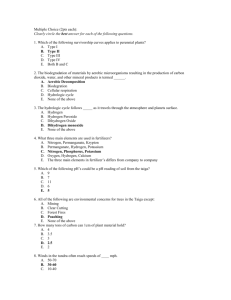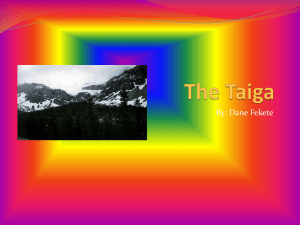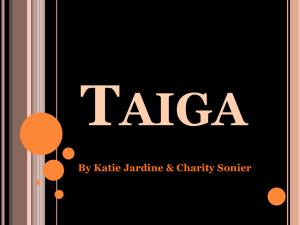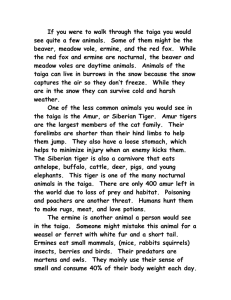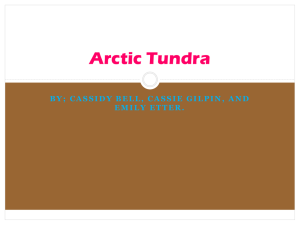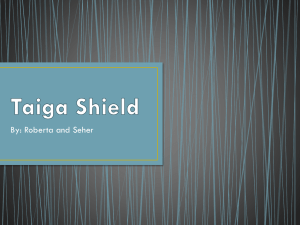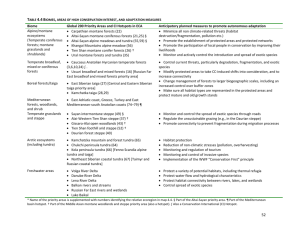Tundra (and Taiga)
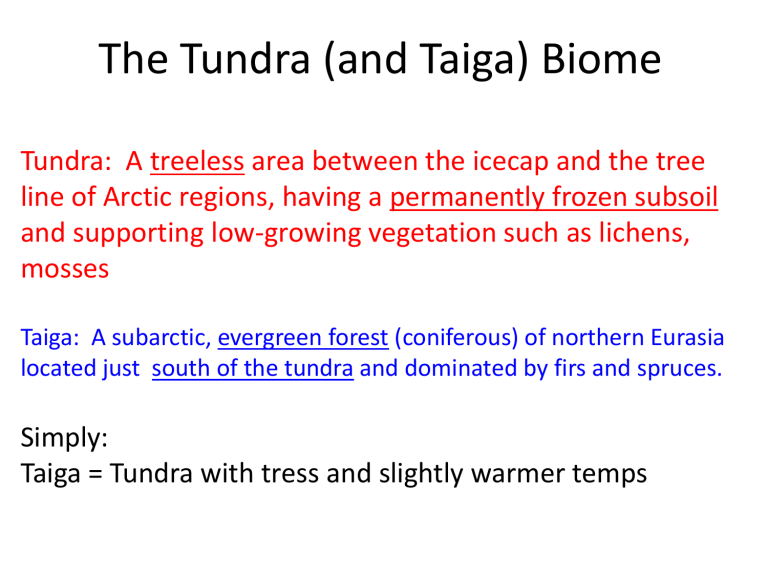
The Tundra (and Taiga) Biome
Tundra: A treeless area between the icecap and the tree line of Arctic regions, having a permanently frozen subsoil and supporting low-growing vegetation such as lichens, mosses
Taiga: A subarctic, evergreen forest (coniferous) of northern Eurasia located just south of the tundra and dominated by firs and spruces.
Simply:
Taiga = Tundra with tress and slightly warmer temps
Although the Tundra and the Taiga are not the same, we will combine the discussion of them today. Both areas are cold, but the Tundra is colder and has a harsher climate.
In the Tundra, it’s sometimes always dark, as the Earth points away from the Sun, and for a few weeks, that part of the globe never gets any sunlight.
In the winter, a small part of the Earth, in the tundra regions, never sees any daylight. This makes the temperatures there become very low for weeks.
In the Summer, that part of the
Earth is in constant daylight, even at “night”.
There is no “night” in the summer in the tundra for weeks on end. This gives a short, but great growing season for plants.
The Taiga is not a Tiger, but Tigers do live in the Taiga.
Taiga is Russian for small sticks, which refers to the evergreen trees of the coniferous forests of the Taiga.
In the Taiga less than four months a year reach 50°, and it is more associated with cold artic temperatures.
Animals and plants have a much better time here than in the Tundra, and the diversity is much greater.
First tundra (and taiga) video: http://youtu.be/w7LnHozIMGY
The Arctic Tundra Student Video: http://youtu.be/3pp4hIg4JjQ
Taiga Biome: http://youtu.be/EKlmMY1DsB8

